Which Woodworking Hand Tools Do You Need to Get Started?
One of the most exciting parts of getting started as a new traditional woodworker is learning about and buying historical style hand tools. But that process can also be one of the most frustrating parts due to the confusion over which hand tools are needed at first, and which are not. There is also a lot of confusion over names, styles, and types of tools. A lot of beginners also don’t know which brands and models to choose. So I have created a number of traditional woodworking buyer’s guides that help new traditional woodworkers overcome this confusion by understanding which antique and new tools they need and which brands and models are the best. Below are buttons that lead to these different traditional woodworking tool buyer’s guides.
SHORTCUT TO FULL BUYER’S GUIDES
20 IMPORTANT HAND TOOLS FOR NEW TRADITIONAL WOODWORKERS
Below is the same list of 20 tools that is found on the first page of the woodworking hand tool buyer’s guide (here). They are included below as a convenience to you.
1. Build or Purchase a Solid Workbench
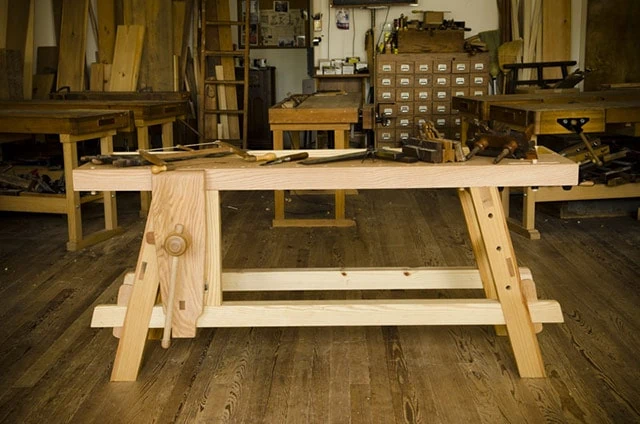
A workbench has always been the center of a traditional woodworker’s workshop. If you’re really on a tight budget you can get away with almost anything that allows you to secure your wood in place for planing and sawing, and use clamps to secure your workpiece.
However, I would recommend that you either build a workbench, or purchase one if you feel a workbench build is too advanced for you right now. However, I created the DVD “Building the Portable Moravian Workbench with Will Myers” so that even beginners can build a solid, portable, and very affordable workbench that will fit almost anywhere, using mostly or only hand tools. You can buy it in my store here. Whichever path you choose, make sure you choose to either build or buy a heavy & sturdy workbench, with at least a 3″ solid top, strong supportive base legs, and two strong vises.
2. Buy a Jack Plane
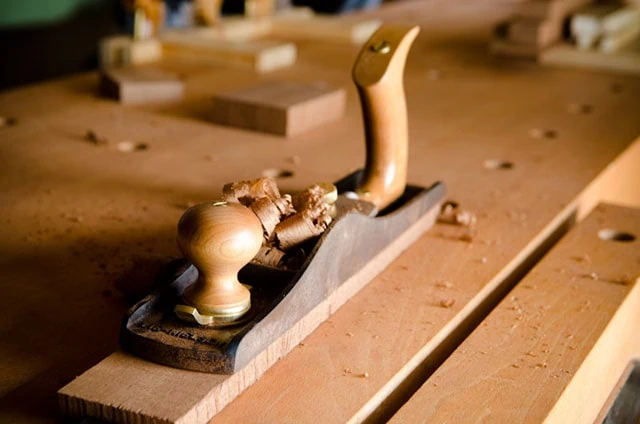
A Jack Plane is a middle size “bench plane” (i.e. planes that are used so often that they are usually on your workbench). If you’re on a budget a jack plane can temporarily be used in place of other planes that perform specialized functions: (1) rough stock removal (if you buy a second iron/blade and shape it with a curved “camber”), (2) jointing board edges (as long as they aren’t too long), and (3) smoothing the boards.
You’ll eventually want to purchase a dedicated smoothing plane (No. 4) and jointer plane (No. 7), but a Jack Plane will let you get started working! A new and sharp low angle Jack Plane would be ideal for beginners and professionals who aren’t up for rehabbing a handplane.
3. Buy a Block Plane
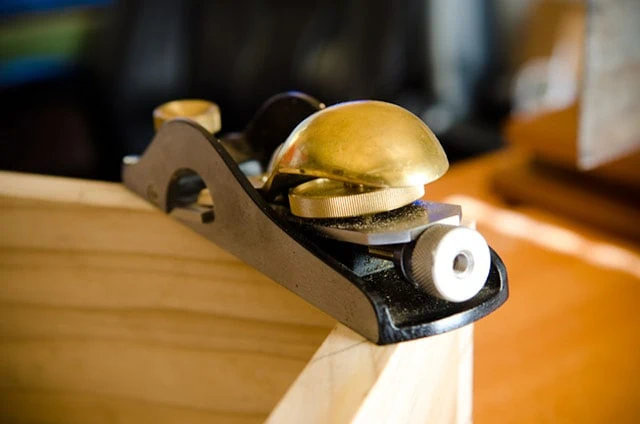
Block planes have become one of the most oft-used tools in a woodworker’s workshop. Some traditional woodworkers even keep them in their aprons! These little planes can be used to trim your joints, put chamfers on board edges, trim end grain, etc. I would recommend finding a low angle block plane, because the low angle lets you cut difficult grain more easily.
I personally prefer a low angle rabbet block plane because it allows me to trim right up against a tenon cheek or other joints, but this isn’t required. My handplane buying guide goes into more detail about the features and brands that you should look for when purchasing a good quality block plane.
4. Buy Two Hand Saws (Panel Saws): Rip and Cross Cut
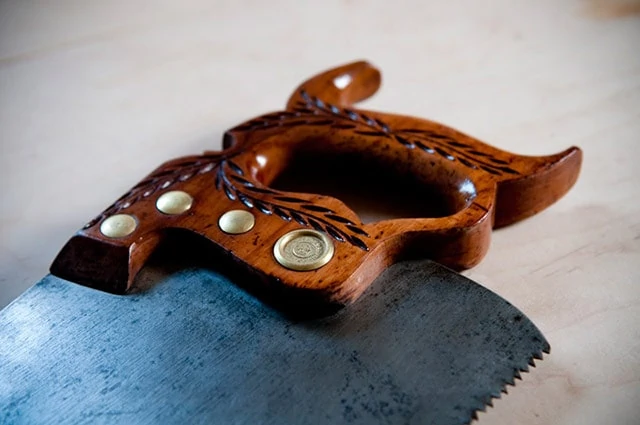
Handsaws (often called “panel saws”) are long, thin saws with a comfortable wooden handle. They are used for rough dimensioning of your lumber. Although a “panel saw” is technically a smaller handsaw that fits into the panel of a tool chest, I’ll hereafter refer to this type of saw as a “Panel Saw” to differentiate them from the broad category referred to as “hand saws”. Panel saws come in two tooth configurations: “Rip” (cuts along the grain…like a chisel) and “Cross Cut” (cuts across the grain…like a knife). You will need both.
Panel saws can be quite affordable (often as little as $5 a piece), but you need to know what you’re looking for and be willing to spend some time learning to refurbish and sharpen. My handsaw buying guide will help you know which brands & models to look out for at your local flea markets or on eBay.
5: Buy Three Back Saws: Dovetail Saw, Carcass Saw, & Tenon Saw
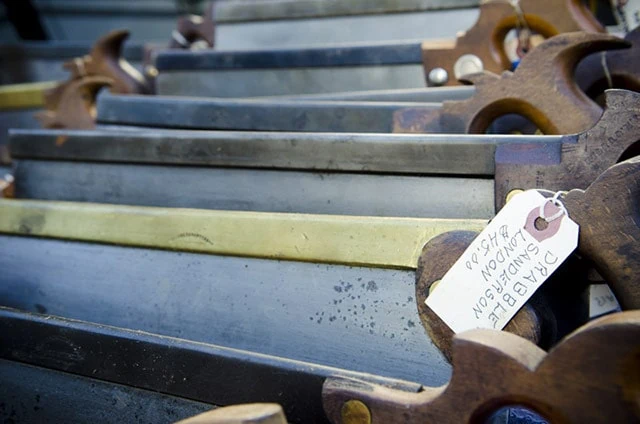
Unlike panel saws, “back saws” are used for fine accurate work when making wooden joints (like dovetail joints). The thin metal saw plates are made stiff with steel or brass “backs” that run along the top of the saw plate.
Your first backsaws should be (1) a dovetail saw, with fine rip teeth, used for cutting joinery along the grain (like dovetails), (2) a “carcass saw” used for cutting across the grain (fine cross cut teeth), and (3) a larger tenon saw used for cutting deeper cuts, like tenon cheeks, along the grain (rip teeth). All three saws are used very, very often in my workshop. You could certainly get by with just a larger dovetail saw and a carcass saw at first, if you don’t plan on immediately cutting large tenons. Buying backsaws can be very confusing because there is no standardized naming system, and a dovetail saw can be turned into a carcass saw (and vice-a-versa) by sharpening it differently. And practically everybody that’s selling antique saws mixes the names up. My buyer’s guide really clears this confusion up and will help you know what to look for.
6. Buy a Miter Box and Miter Saw
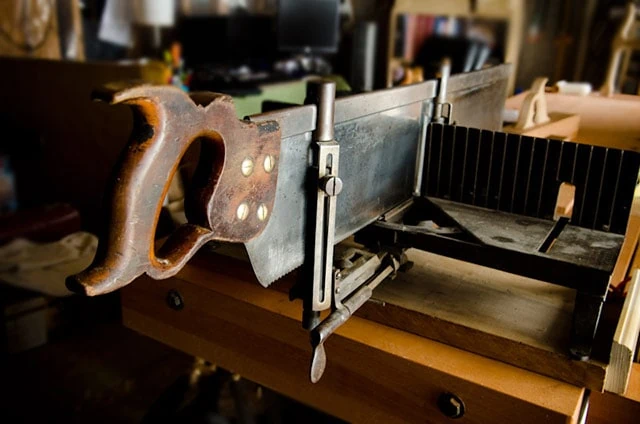
A good miter box & miter saw (a very large backsaw) will enable you to cut your wood to very accurate lengths, at accurate angles. This will especially save you a lot of time in trying to square your board ends when building boxes/tool chests. The long miter saw glides back and forth through a rigid saw frame.
The frame’s angles can be changed to enable you to cut perfect miter joints (the joint used for picture frames) and many other joints. I use my miter saw quite often. I’ve bought them used for as little as $15, but expect to pay more than that.
7. Buy a Coping Saw
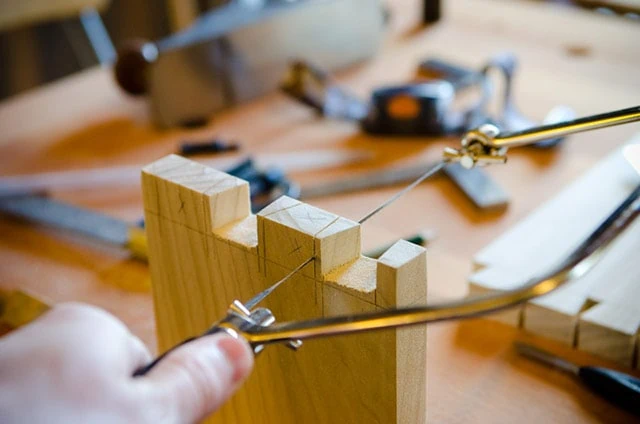
The very affordable coping saw (often around $20) is regularly used for rough cutting shapes in the board, but especially for removing waste from dovetail joints (one of the most common wood joints). An affordable coping saw will work just fine as long as you have plenty of replacement blades on hand (also very affordable). Read my hand saw buying guide for more detail on brands & features to look for when purchasing a coping saw.
8. Buy a Bench Chisel Set
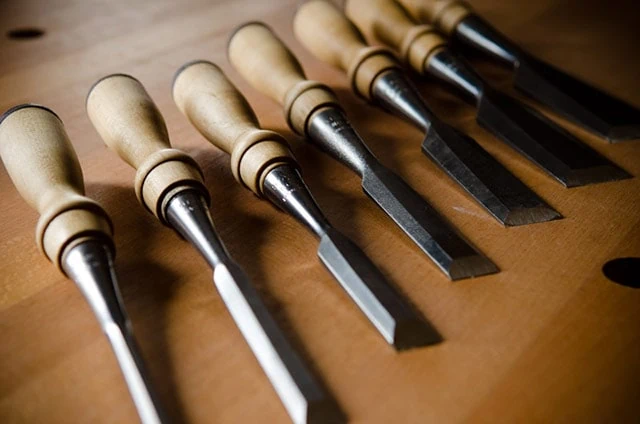
I use chisels perhaps more than any other tool in my workshop, so it’s a good idea to not cheap out here. A high quality set of bevel edge bench chisels (new or vintage) will last you many years (likely your entire life) and will be used on nearly every project. I’ve used some decent affordable plastic handle bench chisels, but highly prefer lighter wooden handle chisels with excellent steel.
A good set of 5-7 bench chisels (they don’t have to match) will get you going right away. Down the road you’ll eventually add some specialty chisels (like paring chisels, fishtail chisels, etc) but bench chisels will work for just about everything. Read the warnings in my chisel buying guide.
9. Buy a Mortise Chisel
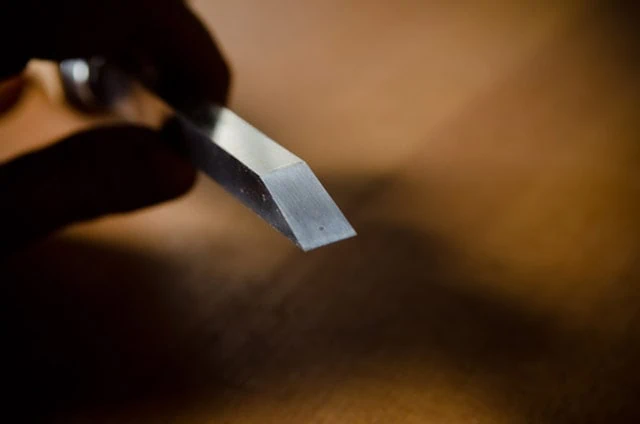
To start off you only need either a 1/4″ or 3/8″ mortise chisel (or some size close to those). You don’t need a whole set of mortise chisels. Mortise chisels (also spelled “mortice”) are used for chopping mortises (rectangular holes) into the side of your board for insertion of a tenon. “Mortise and Tenon” is a very common and very strong joint that most people have heard of.
I prefer the English style “pig sticker” mortise chisels because of their strength, weight, and the feel of the oval handle. My chisel buying guide shows where to find these chisels and what to look for when buying them.
10. Buy a 6-inch Combination Square
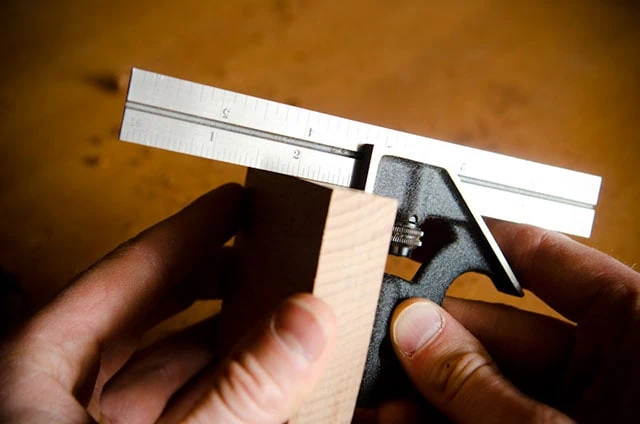
A very good and accurate 6-inch combination square is used for so many tasks in my workshop, including checking the squareness of boards (when planing them to final dimension), scribing dovetail joints, measuring the depth of mortises, and much, much more.
Don’t follow the temptation to cheap out and buy a cheap combination square. Because, like me, you will eventually have to replace it because of its inaccuracy. If you want your joinery to fit perfectly, then you need to scribe it accurately with precise marking tools. Unfortunately there is really only one company (that I know of) that makes a super accurate combination square. But fortunately it is amazing, and I use it daily. I’ll talk about it in-depth in the Layout & Measuring Tool Buying Guide.
11. Buy or Build a Try Square
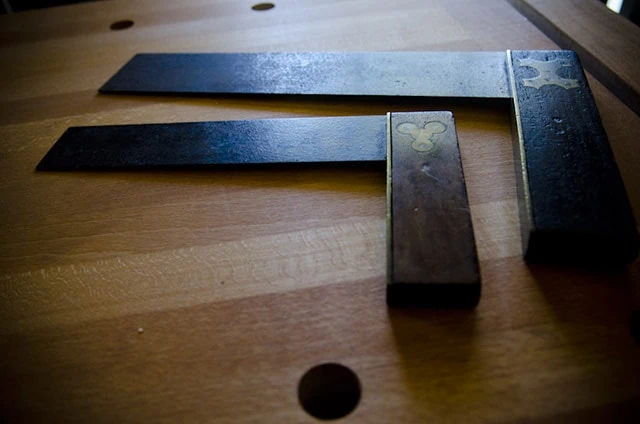
A try square is used to square up your workpieces for precise-fitting joints. If you’re not confident enough to build your own try square yet, you should purchase a good metal try square (somewhere between 9 and 12 inches). It’ll be used for scribing square lines down the face of your boards, such as a line for where to cut with your saw.
Most try squares that I’ve found (used or new) are actually not a perfect 90 degrees, or “square”. But you can use a file to bring it back to square. My marking & measuring buying guide explains how to check a square and also how to fix one that is “out of square”.
12. Buy a Sliding Bevel Square
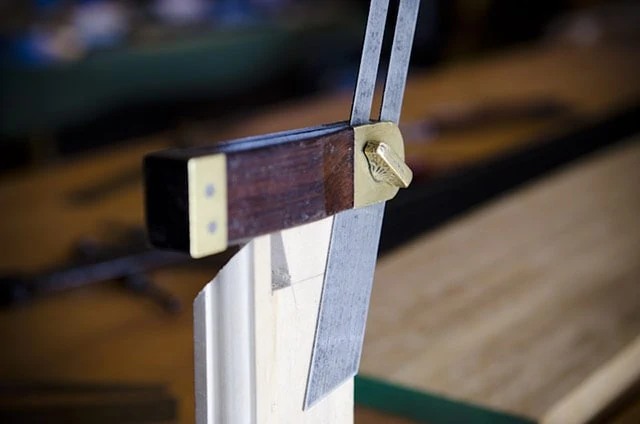
A sliding bevel square (or “bevel gauge”) is used for scribing angles on your workpiece. Once set, a good sliding bevel square should be able to repeat that angle over and over again, like when you are laying out dovetails on a board face.
Not all sliding bevel squares are good at holding that angle, so make sure you read more in my marking & measuring buying guide before you purchase a bevel gauge.
13. Buy Two Pairs of Dividers (Compass)
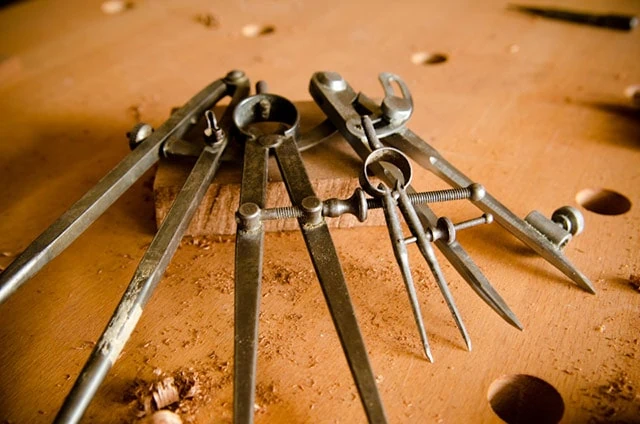
Dividers (or compass) are used for taking and repeating a measurement over and over again on a work piece. Traditional woodworkers rarely take measurements with a tape measure when doing fine joinery work, but rather take a measurement with dividers then transfer that arbitrary (yet accurate) measurement to another work piece. This removes a degree of inaccuracy.
Dividers are also used for scribing arcs and much more. You should definitely have at least two “pair” of dividers because you regularly will be storing and transferring more than one measurement at a time. I prefer a little 3″ pair and a larger 6″ or 9″ pair.
14. Buy or Build a Marking Gauge
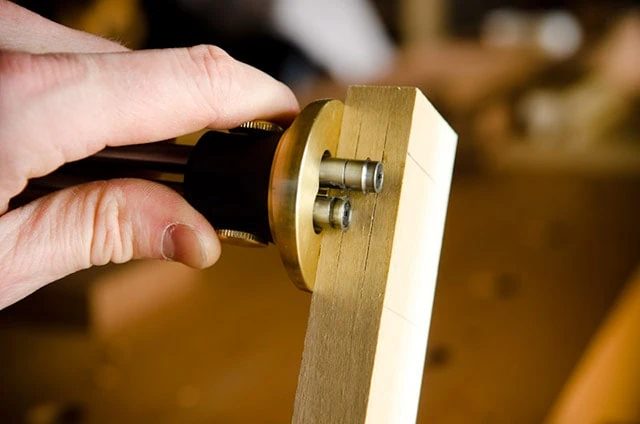
Like dividers, marking gauges are used for transferring a measurement and repeating it over and over again. A locking mechanism keeps the gauge from slipping and loosing that measurement. You cannot build furniture without at least one good sturdy marking gauge.
The wheel-style gauge that I recommend in my buying guide will allow you to not only mark one measurement, but two measurements at once, thus eliminating the need to purchase a separate mortise gauge. It’s nice to save money. But beware of the cheap marking gauges that I mention in my buying guide. They will be useless and a waste of your money.
15. Buy a Folding Rule and/or Tape Measure
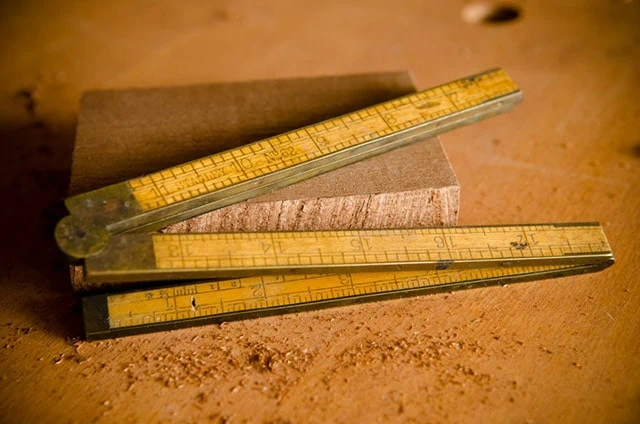
A “folding rule” (not “ruler”) is a predecessor to a tape measure, and allows you to take rough measurements when cutting boards, etc. If you’re on a tight budget, a small tape measure can be used for the same job of rough measurement (think lumber yard). I use both.
A nice vintage 24-inch wooden rule is so handy to have because it slips into your pocket and gives you quick measurements. They are pretty affordable, but you need to know what to look for so you don’t get a dudd. Yes…again, keep reading to learn more.
16. Buy a Marking Knife
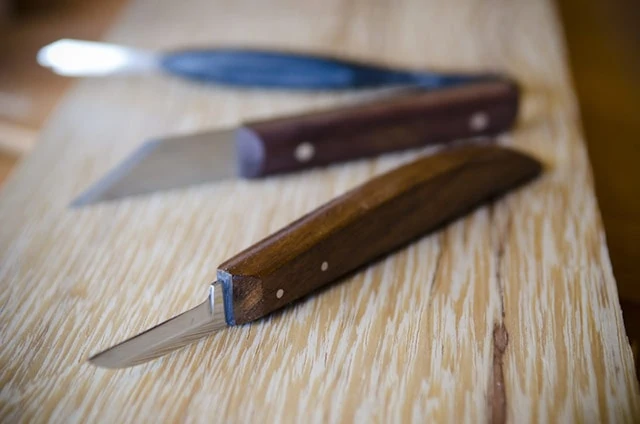
A marking knife is used for marking where you will be cutting with your saws. For getting into tight spots (like dovetails) and making very accurate lines (which is vital for tight fitting joints) you need just the right marking knife. You would think that any old knife would work, but you would be wrong. Years ago I purchased several that didn’t work well.
Marking knives can get very expensive, but fortunately I found a very affordable knife ($10 or $15) that works perfectly. Check my marking & measuring buying guide to see what to look for (and what to avoid) when buying a marking knife.
17. Buy Sharpening Supplies
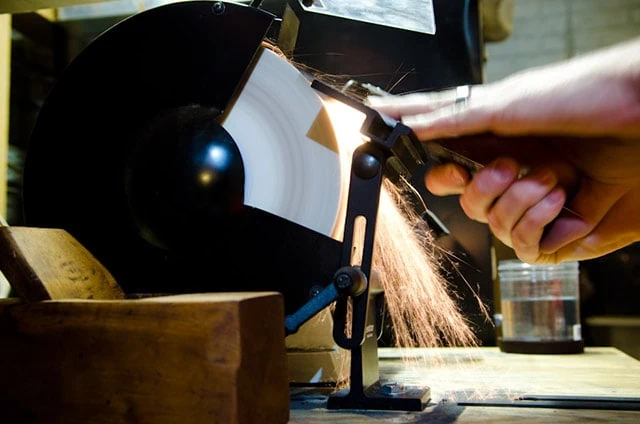
Having very sharp tools is one of the most important aspects of proper traditional woodworking. Many beginners think that they stink at woodworking, but usually they are just using dull (or improperly sharpened) hand tools. To start off with I recommend buying sharpening supplies for sharpening & honing your chisels, hand plane irons, and handsaws.
18. Build or Buy a Wooden Joiner’s Mallet
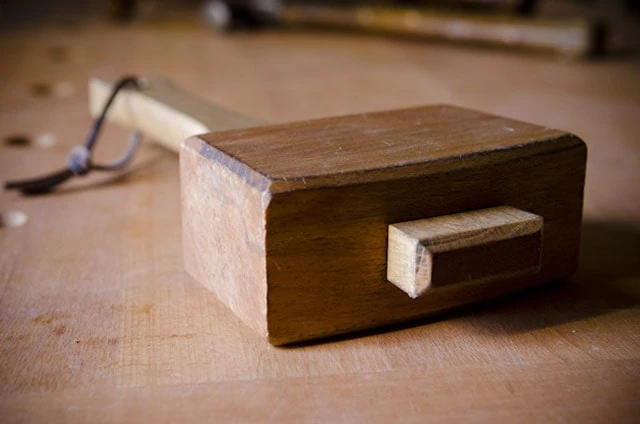
A good wooden mallet is vital for traditional woodworking. I prefer the English-style Joiner’s mallets. The lighter carver’s mallets will not be heavy-duty enough for most tasks, especially chopping on a mortise chisel.
Wooden mallets are mostly used for hitting your chisels when cutting joints (like dovetail joints or chopping mortises). You should never, never, never hit a chisel with a metal hammer. Build or buy a mallet that is made of fairly hard wood (e.g. maple, oak, beach wood, etc.) and one that will feel well balanced in your hand.
19. Buy a Shoulder Plane or Rabbet Plane
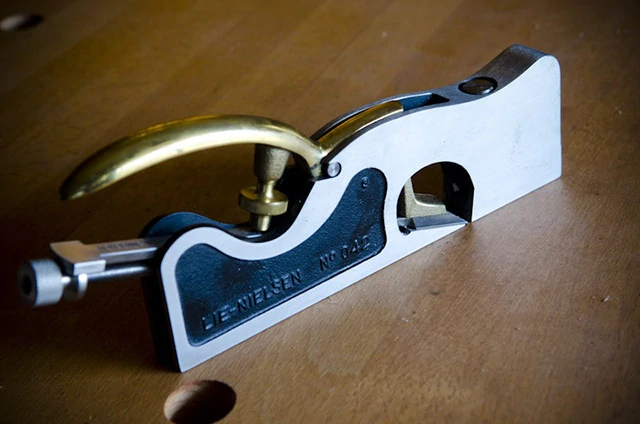
A shoulder plane has so many uses, such as trimming tenons & other joinery, cutting rabbets, removing waste for hand cut moldings, etc.
I prefer the large size because it will cut the most sizes. Years ago I purchased a medium shoulder plane, but it didn’t cut the larger sized joints, so I sold it and purchased a large shoulder plane so I could cut and trim most sized joints. Most of your traditional woodworking hand tools can be vintage/used, but used shoulder planes can be very hard to rehab and get “square”, so I recommend spending the extra money on a new shoulder plane. See my recommendations in my hand plane buying guide.
20. Buy a few Woodworking Clamps
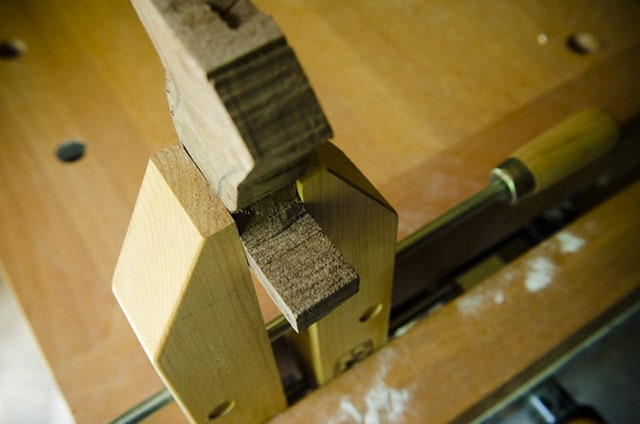
Woodworking clamps hold your freshly glued up joints together until the glue hardens. To start off with I would recommend buying at least one quality “hand screw clamp” (around 10 or 12 inches) and a few bar-type clamps.
But before you purchase clamps, build your first project and put it together without glue. Then see how many clamps you think you will need to put enough pressure in all the right spots. Then proceed to purchase that number of clamps. Repeat this process on your next project, and purchase more clamps if needed. See my buying guide for different clamp types, uses, and my favorite brands.
Shortcut to 10 steps:
- Step 1: Buy the Right Woodworking Hand Tools
- Step 2: Setup Your Workshop & Tool Storage
- Step 3: Learn how to Tune, Refurbish, & Sharpen Tools
- Step 4: Learn how to Use Woodworking Hand Tools
- Step 5: Learn how to Design Woodworking Projects
- Step 6: Learn how to Choose Stable, Strong, & Beautiful Wood
- Step 7: Learn how to Square & Flatten Rough Boards
- Step 8: Joinery: Learn how to Layout & Cut Joints
- Step 9: Learn how to Assemble, Fasten, & Glue-up
- Step 10: Learn how to Traditionally Finish the Wood

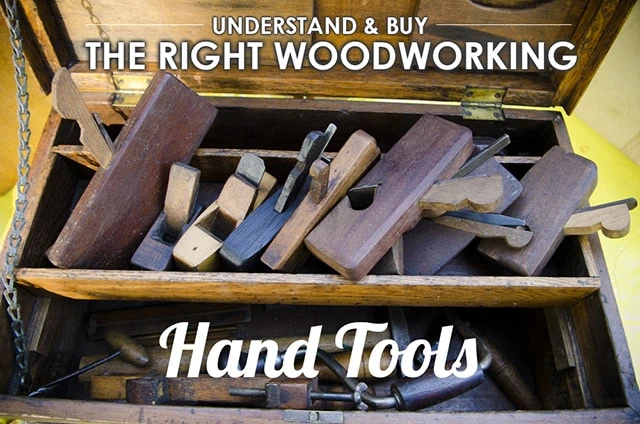
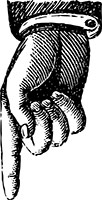
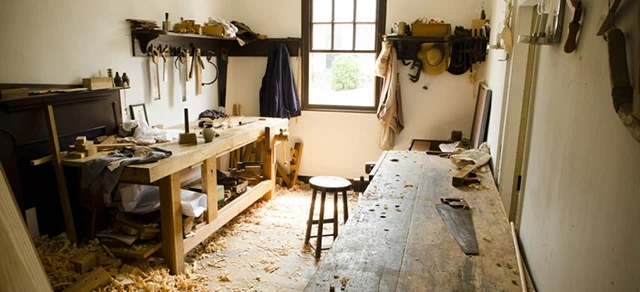
Thank you for the great effort creating this traditional woodworking site for beginners. I am enjoying reading your start up suggestions.
I’m glad it’s been helpful Dave!
Hi Joshua,
Can you refer me to web sites that sell these not second-hand?
Read these guides: https://woodandshop.com/which-hand-tools-do-you-need-for-traditional-woodworking/